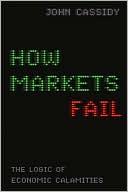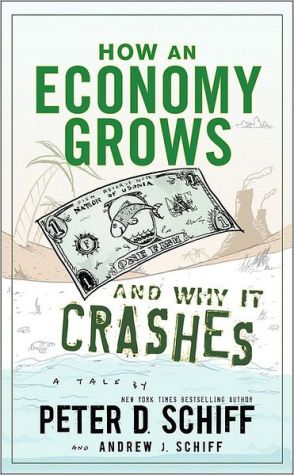How Markets Fail: The Logic of Economic Calamities
Search in google:
Behind the alarming headlines about job losses, bank bailouts, and corporate greed is a little-known story of bad ideas. For fifty years or more, economists have been busy developing elegant theories of how markets work—how they facilitate innovation, wealth creation, and an efficient allocation of society’s resources. But what about when markets don’t work? What about when they lead to stock market bubbles, glaring inequality, polluted rivers, real estate crashes, and credit crunches?In How Markets Fail, John Cassidy describes the rising influence of what he calls utopian economics—thinking that is blind to how real people act and that denies the many ways an unregulated free market can produce disastrous unintended consequences. He then looks to the leading edge of economic theory, including behavioral economics, to offer a new understanding of the economy—one that casts aside the old assumption that people and firms make decisions purely on the basis of rational self-interest. Taking the global financial crisis and current recession as his starting point, Cassidy explores a world in which everybody is connected and social contagion is the norm. In such an environment, he shows, individual behavioral biases and kinks—overconfidence, envy, copycat behavior, and myopia—often give rise to troubling macroeconomic phenomena, such as oil price spikes, CEO greed cycles, and boom-and-bust waves in the housing market. These are the inevitable outcomes of what Cassidy refers to as “rational irrationality”—self-serving behavior in a modern market setting.Combining on-the-ground reporting, clear explanations of esoteric economic theories, and even a little crystal-ball gazing, Cassidy warns that in today’s economic crisis, conforming to antiquated orthodoxies isn’t just misguided—it’s downright dangerous. How Markets Fail offers a new, enlightening way to understand the force of the irrational in our volatile global economy. Publishers Weekly Market disasters—and the cycle of delusions responsible—receive lively, engaging analysis by Cassidy (Dot.con), a journalist at the New Yorker. The author focuses primarily on the rise and fall of free market ideology and the mostly unrealistic ideal of a self-correcting marketplace. An excellent comprehensive history of the economic thought that led to this kind of utopian economics provides a refresher course in Adam Smith, Friedrich August von Hayek, Kenneth Arrow and Hyman Minsky. Both a narrative and a call to arms, the book provides an intellectual and historical context for the string of denial and bad decisions that led to the disastrous “illusion of harmony,” the lure of real estate and the Great Crunch of 2008. Using psychology and behavioral economics, Cassidy presents an excellent argument that the market is not in fact self-correcting, and that only a return to reality-based economics—and a reform-minded move to shove Wall Street in that direction—can pull us out of the mess in which we’ve found ourselves. (Nov.)
Introduction 3Pt. 1 Utopian Economics1 Warnings Ignored and the Conventional Wisdom 172 Adam Smith's Invisible Hand 253 Friedrich Hayek's Telecommunications System 374 The Perfect Markets of Lausanne 495 The Mathematics of Bliss 616 The Evangelist 727 The Coin-Tossing View of Finance 858 The Triumph of Utopian Economics 97Pt. 2 Reality-Based Economics9 The Prof and the Polar Bears 11110 A Taxonomy of Failure 12511 The Prisoner's Dilemma and Rational Irrationality 13912 Hidden Information and the Market for Lemons 15113 Keynes's Beauty Contest 16614 The Rational Herd 17715 Psychology Returns to Economics 19216 Hyman Minsky and Ponzi Finance 205Pt. 3 The Great Crunch17 Greenspan Shrugs 22118 The Lure of Real Estate 23519 The Subprime Chain 25120 In the Alphabet Soup 26821 A Matter of Incentives 28522 London Bridge Is Falling Down 29923 Socialism in Our Time 317Conclusion 335Notes 347Acknowledgments 371Index 373








